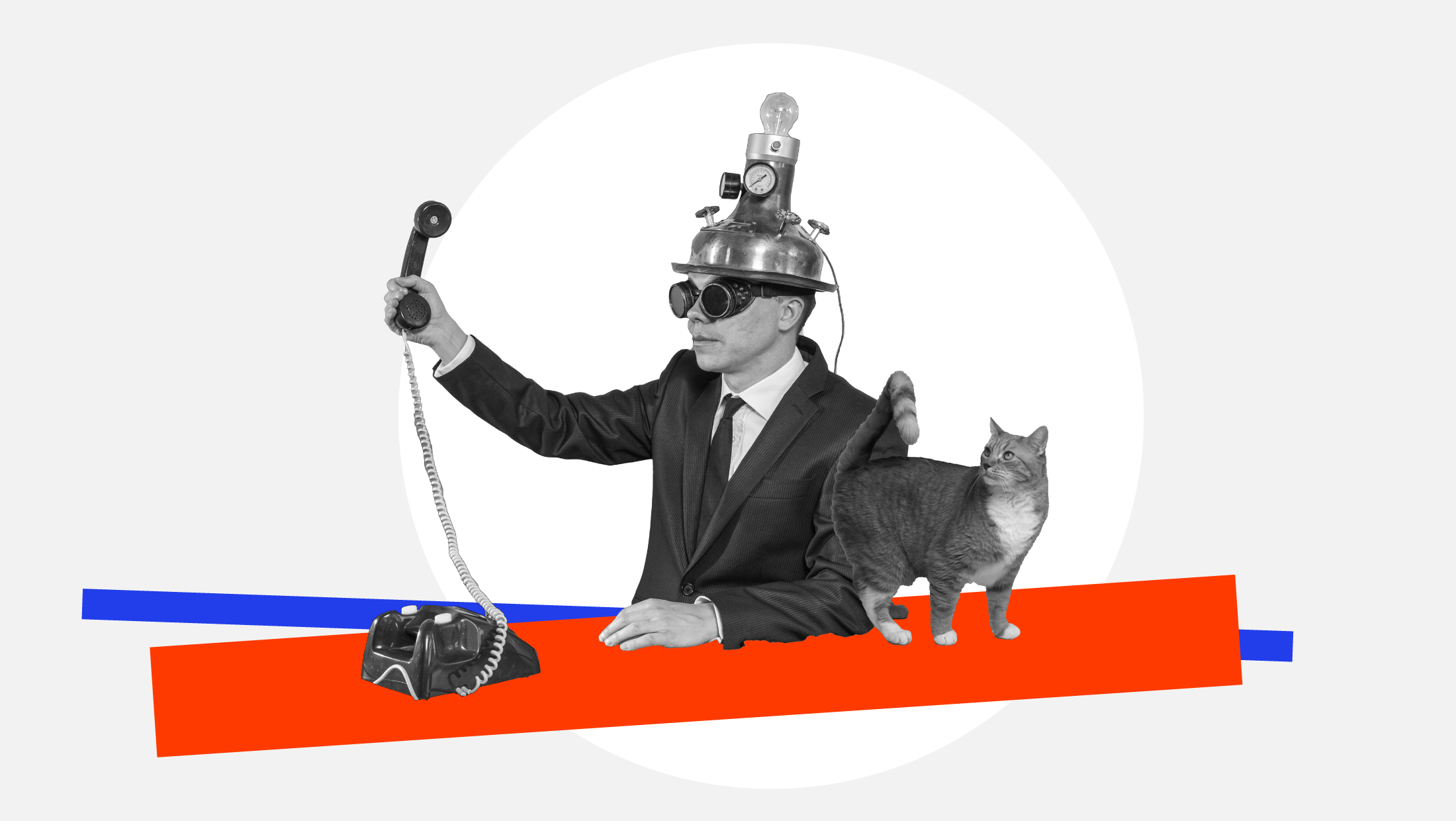How can we help you?
We want to hear from you. And it’s easy to reach us. Give us a shout at 844-886-2252, send us an email at hello@mediumgiant.co, visit our contact page, or fill out the form right here. You can expect a response within two business days.
What are you looking for?
Building a dynamic company culture through continuous learning and development: Part 1
In today’s fast-paced modern economy, workers are focused on jobs that offer career growth and development. At the same time, companies are focused on improving production and efficiency while also increasing employee satisfaction and retention. The key to achieving all of these goals? Implementing a successful learning and development (L&D) strategy.
We sat down with Brandon Handy, Medium Giant’s learning and development specialist, to discuss what makes this function critical to an org, how to implement a strategy that will work, and how employees can be proactive about their own career growth.
Who are you, and what does a learning and development specialist do?

Brandon Handy: I’m the learning and development specialist at the company. I’m responsible for identifying what gaps we have within different departments, understanding employee needs, and determining how I can help train employees and fulfill their professional development opportunities.
I received my undergrad at UT Dallas and majored in psychology and specialized in learning and development. I went on to get my master’s degree in educational leadership from UNT. I’ve worked in learning and development for about 17 years.
My most recent position was not in a professional learning and development setting like this one. For the last five years, I was a public school teacher for third and fourth grade students. It was a fun new challenge for me. I went from teaching and helping adults to teaching and helping children. And I learned a lot of good practices. Within those five years, I also coached teachers and helped bring a lot of new technology to the classrooms. It was a really good time.
What is learning and development, and why is it so important in the modern economy?
BH: I love this question, because you used the word modern. In the modern economy, things evolve so quickly, and that’s just the nature of the market right now. It just changes on a dime.
The first thing is keeping up with the speed of change. It’s important within the workplace to make sure that training and development is prevalent. If your employees aren’t being trained and developed, then they’re using yesterday’s technology and yesterday’s resources.
So my job is to make sure our employees have the resources and development for employees to be successful within their roles.
The second important aspect to learning and development is retention. If you look at the last five years, employees are spending less time in their roles. This has been increasing year after year. Job hopping is more common, with people staying in roles as little as three to six months, and moving on. When they do, it’s usually for one of two reasons:
- They think there’s no room for growth because the company isn’t providing growth opportunities.
- Or they’ve decided that the work culture isn’t for them, so they move on.
Learning and development addresses each of those retention problems. If a company is giving employees space to grow and develop, they have less reason to leave. If an individual contributor wants to take that next step toward becoming a manager but doesn’t have a path to get there, then they’ll look for a company that does.
Then there is the impact on work culture. Most people don’t immediately correlate learning and development to culture, but think how information is disseminated within a company: Education is how employees are trained on new practices, and it’s how managers are trained to become better leaders.
If we’re not teaching our managers how to develop, coach, and respect our employees, then we’re not promoting a healthy work culture. And people will leave if we don’t have that healthy work culture.
What is the role of companies in learning and development?
BH: It depends on the level of maturity of a company, which then determines the resources and investment that it can dedicate to learning and development.
Generally companies will be in one of three categories.
1. They’re at the entry level of learning and development. This involves the basics, which is mostly around providing compliance training. Things like:
- company handbook training
- sexual harassment training
- new employee orientation
These are important practices to have. But they don’t do much to help employees grow in their skills.
2. The next level is providing development training for employees.
This ensures that employees are aware of new practices that the company is coming out with and provides opportunities for voluntary one-off training.
At this level, there is development, but it’s often optional and for special cases. It usually fills a business need first, with employee development being an added benefit. Think about sending salespeople to conferences or getting a team certified on a new tool the company is starting to use.
3. The third level is providing on-demand training and career pathing.
On-demand training and development shows employees that the company truly cares about their future. This level typically involves some sort of learning platform or technology. It requires more investment and upkeep to maintain the training and development platforms so that you can continually offer engaging content to employees.
What does Medium Giant do to promote learning and development for its employees?
BH: We’re transitioning from step two to step three in our learning and development training.
At the first level, we’ve got our compliance training in a firm place, and we will continue to update it throughout the year.
And then of course, in step two, we have a few available trainings that are live. Last year we added DEI training with Dr. James Pogue, and we have more to add in 2023. And soon we’re going to have more level three options, with an open availability of different trainings that people can take.
We’re also reflecting on the requests that people have brought to us. One of the most common is development in self-help and self-care. We host regular webinars in partnership with Magellan Health and Wellness. These development sessions help coach people through things like how to take care of themselves, how to grieve, or how to thrive during the holidays.
Generally, we want to see that progression from step two to step three, and we want to see the availability of more resources for Medium Giant so that the company can really decide what it needs.
Going into 2023, we’re going to be looking at a more robust gap analysis for the company in general. This will involve doing some surveys, filling out departments, getting different input, finding what they need to be beneficial, and then trying to add content for that.
What mistakes are companies making in terms of learning and development to educate their employees?
BH: They’re not doing it. <Laugh>
Luckily, there’s been a big push for learning and development probably within the last five to 10 years. Many employers are choosing to embrace more learning and development within the company, which is great.
If they are doing it, though, the biggest mistake is only offering the basic compliance level. This is the bare minimum and doesn’t address any of the development skills that impact culture and retention.
Final thoughts?
BH: The key takeaway is that learning and development feeds into the culture. It touches every aspect of an organization, and companies need to strive to implement deeper and richer learning.
It’s going to benefit the employees, the clients, and, ultimately, the brand itself.
Building a dynamic company culture through continuous learning and development: Part 1
In today’s fast-paced modern economy, workers are focused on jobs that offer career growth and development. At the same time, companies are focused on improving production and efficiency while also increasing employee satisfaction and retention. The key to achieving all of these goals? Implementing a successful learning and development (L&D) strategy.
We sat down with Brandon Handy, Medium Giant’s learning and development specialist, to discuss what makes this function critical to an org, how to implement a strategy that will work, and how employees can be proactive about their own career growth.
Who are you, and what does a learning and development specialist do?

Brandon Handy: I’m the learning and development specialist at the company. I’m responsible for identifying what gaps we have within different departments, understanding employee needs, and determining how I can help train employees and fulfill their professional development opportunities.
I received my undergrad at UT Dallas and majored in psychology and specialized in learning and development. I went on to get my master’s degree in educational leadership from UNT. I’ve worked in learning and development for about 17 years.
My most recent position was not in a professional learning and development setting like this one. For the last five years, I was a public school teacher for third and fourth grade students. It was a fun new challenge for me. I went from teaching and helping adults to teaching and helping children. And I learned a lot of good practices. Within those five years, I also coached teachers and helped bring a lot of new technology to the classrooms. It was a really good time.
What is learning and development, and why is it so important in the modern economy?
BH: I love this question, because you used the word modern. In the modern economy, things evolve so quickly, and that’s just the nature of the market right now. It just changes on a dime.
The first thing is keeping up with the speed of change. It’s important within the workplace to make sure that training and development is prevalent. If your employees aren’t being trained and developed, then they’re using yesterday’s technology and yesterday’s resources.
So my job is to make sure our employees have the resources and development for employees to be successful within their roles.
The second important aspect to learning and development is retention. If you look at the last five years, employees are spending less time in their roles. This has been increasing year after year. Job hopping is more common, with people staying in roles as little as three to six months, and moving on. When they do, it’s usually for one of two reasons:
- They think there’s no room for growth because the company isn’t providing growth opportunities.
- Or they’ve decided that the work culture isn’t for them, so they move on.
Learning and development addresses each of those retention problems. If a company is giving employees space to grow and develop, they have less reason to leave. If an individual contributor wants to take that next step toward becoming a manager but doesn’t have a path to get there, then they’ll look for a company that does.
Then there is the impact on work culture. Most people don’t immediately correlate learning and development to culture, but think how information is disseminated within a company: Education is how employees are trained on new practices, and it’s how managers are trained to become better leaders.
If we’re not teaching our managers how to develop, coach, and respect our employees, then we’re not promoting a healthy work culture. And people will leave if we don’t have that healthy work culture.
What is the role of companies in learning and development?
BH: It depends on the level of maturity of a company, which then determines the resources and investment that it can dedicate to learning and development.
Generally companies will be in one of three categories.
1. They’re at the entry level of learning and development. This involves the basics, which is mostly around providing compliance training. Things like:
- company handbook training
- sexual harassment training
- new employee orientation
These are important practices to have. But they don’t do much to help employees grow in their skills.
2. The next level is providing development training for employees.
This ensures that employees are aware of new practices that the company is coming out with and provides opportunities for voluntary one-off training.
At this level, there is development, but it’s often optional and for special cases. It usually fills a business need first, with employee development being an added benefit. Think about sending salespeople to conferences or getting a team certified on a new tool the company is starting to use.
3. The third level is providing on-demand training and career pathing.
On-demand training and development shows employees that the company truly cares about their future. This level typically involves some sort of learning platform or technology. It requires more investment and upkeep to maintain the training and development platforms so that you can continually offer engaging content to employees.
What does Medium Giant do to promote learning and development for its employees?
BH: We’re transitioning from step two to step three in our learning and development training.
At the first level, we’ve got our compliance training in a firm place, and we will continue to update it throughout the year.
And then of course, in step two, we have a few available trainings that are live. Last year we added DEI training with Dr. James Pogue, and we have more to add in 2023. And soon we’re going to have more level three options, with an open availability of different trainings that people can take.
We’re also reflecting on the requests that people have brought to us. One of the most common is development in self-help and self-care. We host regular webinars in partnership with Magellan Health and Wellness. These development sessions help coach people through things like how to take care of themselves, how to grieve, or how to thrive during the holidays.
Generally, we want to see that progression from step two to step three, and we want to see the availability of more resources for Medium Giant so that the company can really decide what it needs.
Going into 2023, we’re going to be looking at a more robust gap analysis for the company in general. This will involve doing some surveys, filling out departments, getting different input, finding what they need to be beneficial, and then trying to add content for that.
What mistakes are companies making in terms of learning and development to educate their employees?
BH: They’re not doing it. <Laugh>
Luckily, there’s been a big push for learning and development probably within the last five to 10 years. Many employers are choosing to embrace more learning and development within the company, which is great.
If they are doing it, though, the biggest mistake is only offering the basic compliance level. This is the bare minimum and doesn’t address any of the development skills that impact culture and retention.
Final thoughts?
BH: The key takeaway is that learning and development feeds into the culture. It touches every aspect of an organization, and companies need to strive to implement deeper and richer learning.
It’s going to benefit the employees, the clients, and, ultimately, the brand itself.




